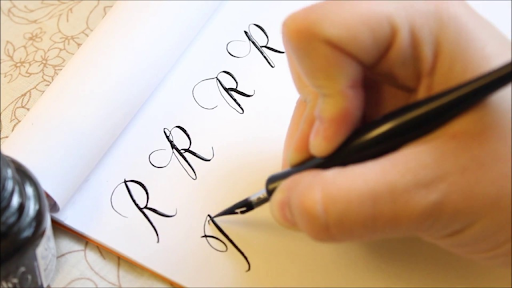Calligraphy and hand lettering, two distinct but closely related art forms, have been cherished for centuries as expressions of beauty, precision, and creativity. From elegant scripts adorning ancient manuscripts to modern hand-lettered designs gracing wedding invitations and signage, the art of calligraphy and hand lettering continues to captivate enthusiasts around the world. Join us as we explore the rich history, techniques, and contemporary applications of these timeless crafts.
Table of Contents
Origins and Evolution
The roots of calligraphy can be traced back thousands of years to ancient civilizations such as Mesopotamia, Egypt, and China, where scribes used stylized writing techniques to inscribe religious texts, legal documents, and literary works on various mediums such as papyrus, parchment, and stone. Over time, calligraphy spread across cultures and continents, evolving into diverse styles and scripts influenced by regional traditions and artistic sensibilities. Hand lettering, a more contemporary form of lettering characterized by its fluidity and expressive qualities, emerged as a distinct art form in the 20th century, inspired by the revival of interest in traditional craftsmanship and design.
Tools and Materials
Calligraphy and hand lettering require specialized tools and materials tailored to the unique characteristics of each art form. Traditional calligraphy tools include nib pens, brushes, ink, and parchment or paper, while hand lettering often utilizes markers, pens, pencils, and digital tools such as tablets and software. The choice of tools and materials depends on factors such as the desired style, medium, and level of expertise, with artists experimenting with different combinations to achieve their desired effects.
Techniques and Styles
Calligraphy encompasses a wide range of scripts and styles, each characterized by distinctive letterforms, strokes, and flourishes. Major calligraphic scripts include foundational, italic, copperplate, and Gothic, each requiring mastery of specific techniques such as pressure, angle, and spacing. Hand lettering, on the other hand, offers greater freedom and flexibility in style and expression, with artists creating custom letterforms and compositions tailored to individual projects and preferences. Common hand lettering styles include brush lettering, script lettering, and serif and sans-serif typography.
Applications and Uses
Calligraphy and hand lettering find applications in a variety of contexts, from traditional book design and manuscript illumination to contemporary graphic design, branding, and signage. Calligraphy is often used for formal occasions such as weddings, graduations, and corporate events, where its elegant and timeless appeal adds a touch of sophistication and personalization. Hand lettering, with its versatility and adaptability, is widely used in advertising, packaging, editorial design, and social media, where its expressive qualities and handmade aesthetic resonate with audiences.
Modern Trends and Innovations
In recent years, calligraphy and hand lettering have experienced a resurgence in popularity, fueled by the growing interest in handmade crafts, personalized design, and artisanal goods. Social media platforms such as Instagram and Pinterest have become hubs for calligraphy and hand lettering enthusiasts, providing a platform for artists jpslot to showcase their work, share techniques, and connect with like-minded individuals. Digital tools and software have also revolutionized the field, allowing artists to create, digitize, and manipulate lettering designs with unprecedented ease and precision.
Education and Community
The global calligraphy and hand lettering community is a vibrant and supportive network of artists, educators, and enthusiasts passionate about lettering arts. Workshops, classes, and online tutorials offer opportunities for beginners to learn the fundamentals of calligraphy and hand lettering, while advanced practitioners can hone their skills and explore new techniques. Calligraphy guilds, lettering societies, and online forums provide platforms for artists to share their work, exchange ideas, and participate in collaborative projects, fostering a sense of camaraderie and shared passion for lettering arts.
Conclusion: A Journey of Beauty and Expression
In conclusion, calligraphy and hand lettering stand as timeless expressions of beauty, craftsmanship, and creativity, transcending cultures, languages, and centuries. From the graceful strokes of a traditional script to the expressive flourishes of a hand-lettered design, the art of lettering captivates the eye and stirs the soul, inviting us to appreciate the power and poetry of written language. As we celebrate the rich history and contemporary relevance of calligraphy and hand lettering, let us embrace the beauty of letters and words, and continue to explore the boundless possibilities of this ancient and ever-evolving art form.
